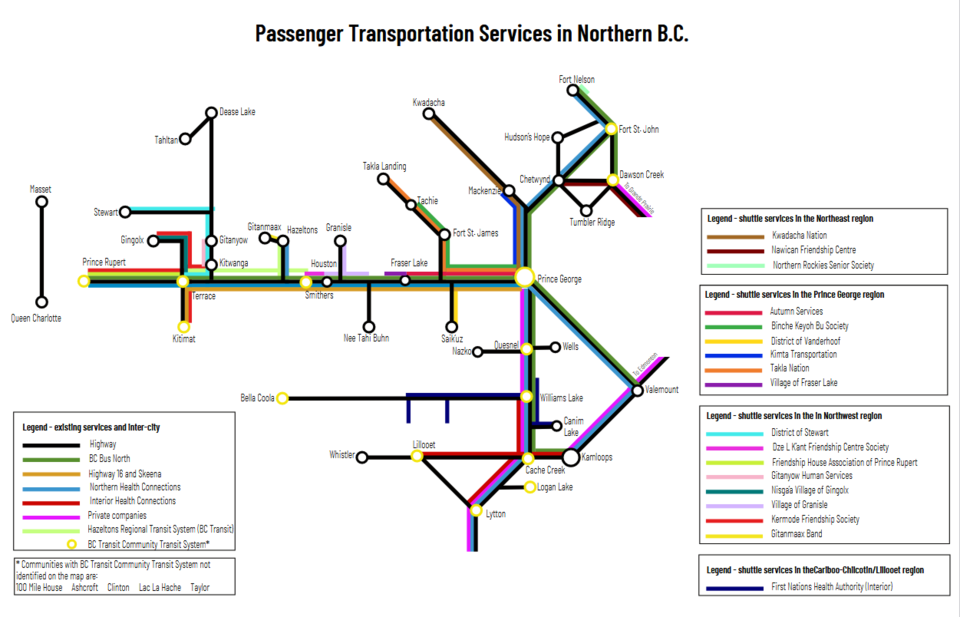When Greyhound shut down its Western Canadian transportation operations and the last bus left Prince George in 2018, many people thought there was nobody to fill the void.
That perception still continues, even though the BC Bus North and 17 other regional shuttles funded by Northern Development Initiative Trust stepped up to fill the Greyhound gap and continue to provide a vital lifeline for passengers in northern B.C.
A new study concludes that NDIT should continue to fund the 17 existing shuttle services to connect to locations in the north not considered viable by BC Transit and that BC Bus North should continue servicing its northern BC routes, which began in 2021 as a provincial initiative.
“BC Bus North was introduced after Greyhound left and people are unaware that there is a service that travels all the way from Prince Rupert to Valemount and Fort Nelson, and even further south, and people are unaware that there is this bus that runs weekly if not more frequently and it has an affordable fare,” said Anna Duff, NDIT’s senior communications officer.
One of the recommendations of the report, issued Monday by NDIT, is to create an app and/or website to inform people of their public transportation options.
“A technology platform could consolidate all service offerings together in one place and better enable providers to coordinate trips between them, post available trips and provide more responsive on-demand services in smaller communities,” the study found. “Ideally this platform should not only encompass ground transportation but ferries and regular water taxi schedules as well. Such a platform could also facilitate emergency updates if routes are changed or cancelled.”
In recognition many people do not use electronic media for their information, the study recommends posting bus schedules using radio and newspaper advertising, bulletin boards, community newsletters and posters at pick up/drop off points.



